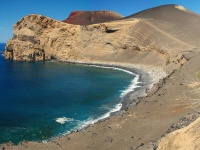
Faial, with its sheltered bays and immense volcanic crater, is the most visited of the Azores islands. Much of the interior is protected as a reserve where visitors can enjoy the diverse flora and fauna under the guidance of local guides. Faial's main town, Horta, has a large marina that is a favoured stopping point for yachtsmen, and the harbour also occasionally accommodates cruise liners. Horta and other villages have a number of pretty churches, chapels, towers and forts, and a lively small-town atmosphere. Of interest to sightseers is the new section of land, covering an area of approximately one mile (two km), added to the island in the most recent volcanic eruption of 1957.
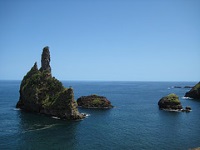
Literally the island of 'flowers', this most northerly of the Azores blooms, carpeted with numerous flowers among impossibly green hills and white-washed villages. Considered one of the most beautiful islands in the Azores, the best time to visit is summer, when it is covered in the bright pink and blue hydrangeas that give Flores its name. Highlights on the island include the seven serene lakes in volcanic craters, the Enxareus Grotto, the Águas Quentes hot springs, and the multiple waterfalls of the Ribeira Grande. Flores' largest town, Lajes, is a picturesque fishing port set in green fields. All the island's towns and villages have historic chapels and churches to explore.
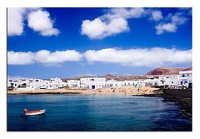
The tiny Graciosa is known as the 'White Island' of the Azores due to the pale rocky landscape. But there is variety in its golden wheatfields and green and purple vineyards. The landscape is dotted with quaint Dutch-style windmills, and most of its 4,600 inhabitants make their living from farming, winemaking and cattle-raising. Graciosa has its own unique natural attraction: the Furna de Enxofre. This is a small, warm sulphur lake, concealed in a grotto underneath a volcanic crater. Visitors on holiday here can reach the lake via a 270ft (80m) spiral staircase enclosed in a brick tower.
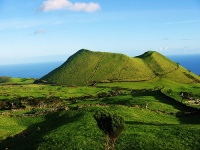
The resort island of Pico is dominated by its volcanic namesake, rising from the middle of the landscape and towering 7,720ft (2,351m) above sea level. It is the highest peak in Portugal. A single road, following the rugged coastline, encircles the island. It is possible to climb the volcano to the peak but the route is arduous and should not be attempted by amateurs. Pico's other main claim to fame is as a jumping-off point for whale-watching expeditions, offered by local boatmen. In the island's vineyards, the famous 'verdelho' wine grapes are grown. In the town of Lajes, there is a whale-hunting museum and at São Roche, you can discover a museum depicting the operation of a whaling factory.
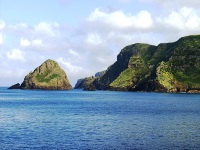
The island resort of Santa Maria, a fantastic holiday retreat, lies southwest of São Miguel Island and features an airport that was a World War II American Air Force base, now appropriated as a civil airport. The main town on the island is Vila do Porto. It only has one hotel but also several inns and private villas for rent. There are a few sandy golden beaches on the island, including Praia Formosa, and the scenic Maia and São Lourenço Bays, offering rocky cliffs and attractive vineyards. Pretty villages like Anjos and Santo Espírito are steeped in local history and culture, and the island has many colourful festivals throughout the summertime.
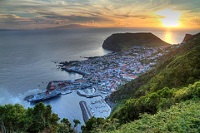
The resort island of São Jorge is surrounded by sheer black cliffs and is the centre of the Azores' dairy industry. The lush green grass of the island's fields plumps up the grazing cows, who in turn produce rich milk for creamy, straw-coloured wheels of cheese. The island also has exclusive rights to the delicious fleshy cockles that are caught in the waters of Caldeira de Santo Cristo. Aside from its gastronomic delights, São Jorge offers active pursuits like dive fishing, hiking, swimming and bird watching. Villages such as Velas and Manadas possess historic buildings dating back to 1400 and offer the sleepy culture of traditional harbour towns.
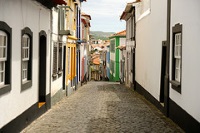
Terceira, an island resort destination in the Azores, holds many places of interest for tourists. The historic centre of its capital town, Angra do Heroísmo, is classified as a UNESCO World Heritage Site. The town is an idyllic setting, renowned for its pastel-coloured sunset vistas. Terceira is best known for its periodic 'running of the bulls'. Ask in the local bar when the next event is likely to take place. Besides the capital, the other main town on the island, Praia da Vitória, is interesting because of its American flavour. Being close to the American airbase in Lajes, it features several burger joints and US-style souvenir shops.

Travel Guide powered by Word Travels, copyright © 2023 Globe Media Ltd. By its very nature information in this travel guide is subject to change at short notice and travellers are urged to verify information on which they're relying with the relevant authorities. Neither Globe Media Ltd nor Travel Vogue can accept any responsibility for any loss or inconvenience to any person as a result of information contained above.